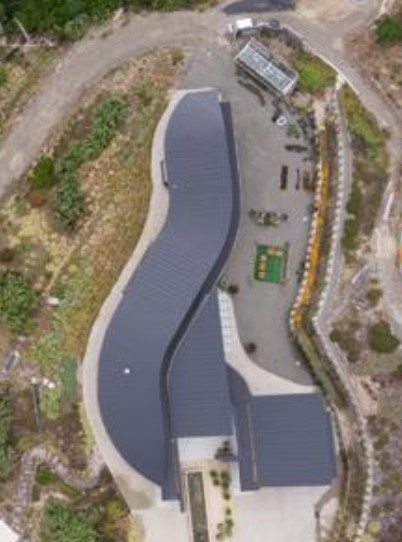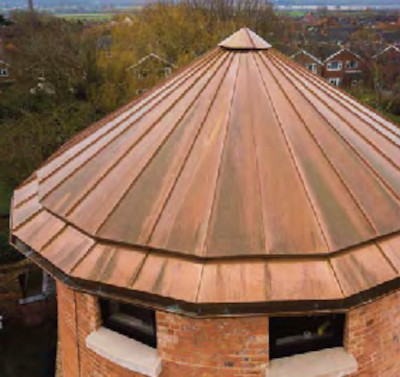Tray Roofing Profiles
Self-support tray roofing profiles resemble a single tray trough section but the ribs are generally narrower and the installation techniques are more sophisticated. Standing seam profiles generally have rib heights of 25 mm – 45 mm. Pan widths for both types vary from 300 mm to 500 mm.
Traditional standing seam shapes are angle-seamed, double-seamed, or roll cap. The angle seam is the most popular and the double seam is the least popular. The roll cap replicates old roofs with a capped joint installed over a longitudinal batten.
One of the features of standing seam roofs is that they can be formed by folding rather than roll-forming. This makes it possible to install roofs to buildings that are round or sinusoidal in plan, to have “random” pan widths, or to vary rib width discretely so that ribs are spaced equidistant from associated architectural features such as penetrations and windows.
All tray roofing, including standing seam profiles, must have clearance between adjacent pans to allow for timber shrinkage and transverse thermal expansion of the pan. The non-existence of this clearance gap can cause excessive canning or quilting.
Standing Seam Cladding on a Round Building.
Some manufacturers have the facility to curve their trays in a concave or convex shape.
- Log in to post comments


